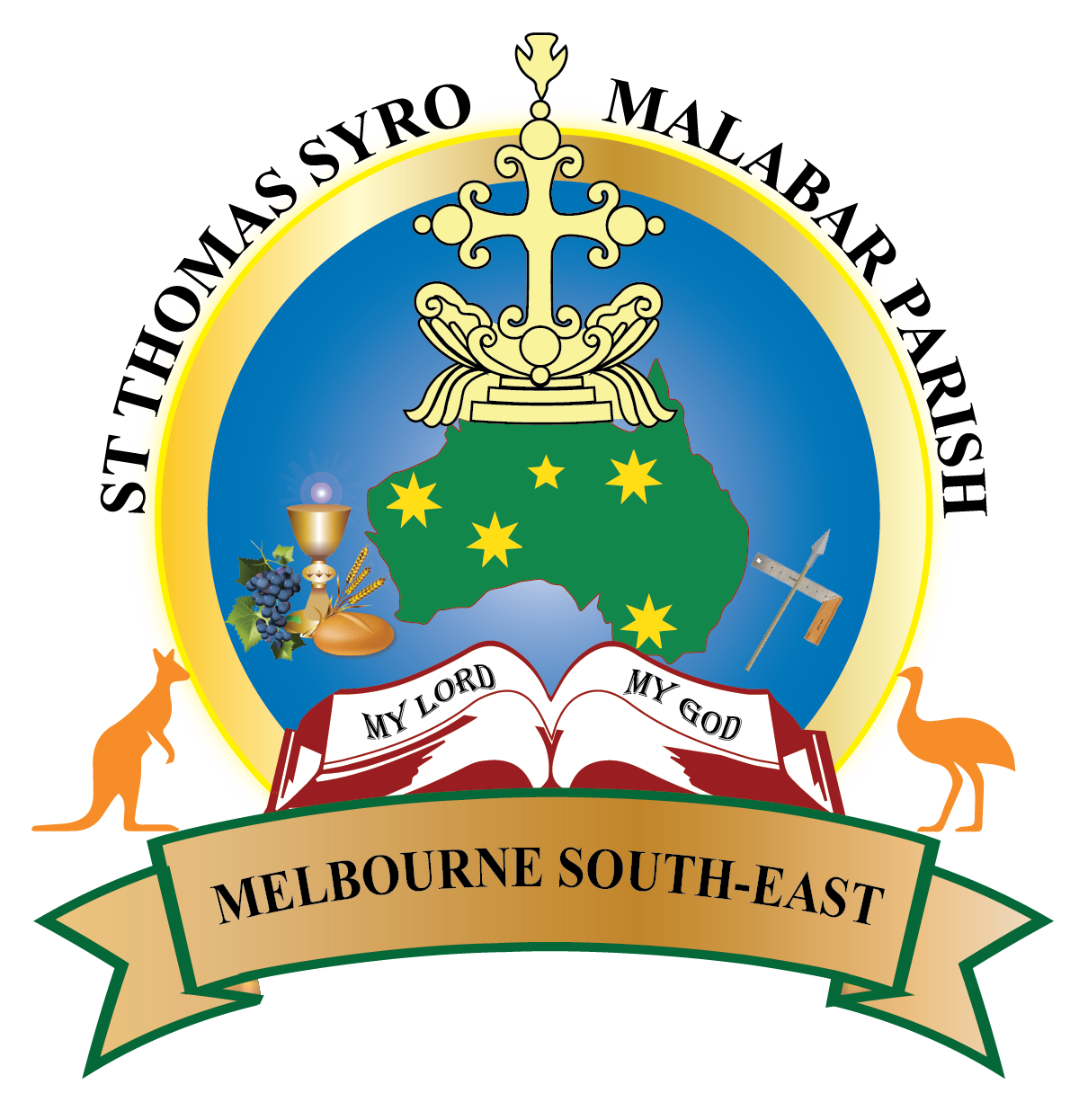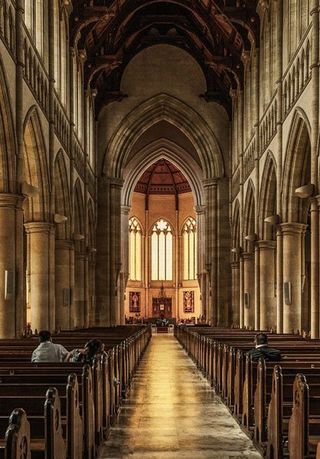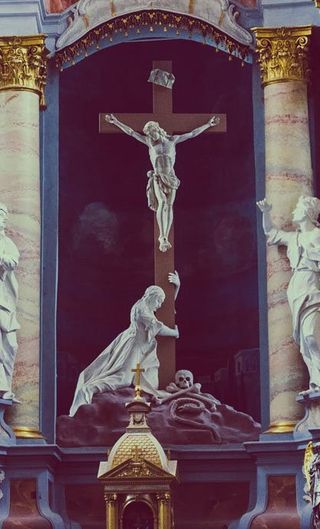St Thomas the Apostle
A Brief History of St Thomas The Apostle In India
According to tradition, Christianity in Kerala was founded by Saint Thomas the Apostle, who landed on the Malabar Coast, at Maliankara near Cranganore (Kodungallur), in 52 AD. For how long the date has been established is an interesting question in itself. The modern Malayalam ballad Thomas RambanPattu (“The Song of the Lord Thomas”), which gives absolutely precise data about the details of the Apostle’s activity, dates his arrival to 50 AD, in the month of Dhanu (December), and his death in Mylapore (Mailapuram) to 72 AD, on the 3rd day of the month of Karkidakam (July), corresponding to the traditional memorial day of the Apostle in the Syrian Churches, at 4:50 p.m. However, this apparently reflects a later tradition. An earlier tradition was found recently in a palm-leaf manuscript belonging to the collection of the Syro-Malabar Major Archbishop’s House in Ernakulam, which, among eighteen Malayalam apocrypha, also contains the Malayalam version of the apocrypha, the Acts of Thomas .
On his arrival – so tradition holds – the Apostle converted several Brahmin families, from whom a good part of the present-day Nazranies descend, and founded seven churches: Maliankara (Kodungallur or Cranganore), Palayur, Kottakavu (North Parur), Kokamangalam (Pallipuram), Niranam, Chayal and Kollam (Quilon). There is a beautiful story vividly recounted among the local Christians and invoked in many books about the foundation of the Palayur church, not far from Cranganore where Saint Thomas is believed to have landed, and close to Guruvayur, the famous centre of Krishna worship. According to this tradition, the Apostle arrived there and found several nambudhiri (or namputhiri) Brahmins (that is, Kerala Brahmins) bathing in a tank and throwing up handfuls of water as an offering to their sun-god. He asked them whether they were able to throw the water up so that it could stay suspended in the air without falling back down, as a proof that their god had accepted it. The Brahmins replied this was impossible; the Apostle performed a miracle and the water remained in the air, proving that Christ had accepted the offering. This convinced the Brahmins, who accepted baptism from the Apostle in the same tank. Their temple was transformed into a Christian church, while those who stuck to their Hindu faith fled from the place. They cursed the land and called it Chapakatt (Chowghat in the Anglicised version, now Chavakkad), “the Cursed Forest.”
Marthoma Nasrani
Some sixteenth-century Portuguese sources, partly edited but for the most part unedited, studied by the very learned Fr. Mathias Mundadan, the doyen of Indian Church history, speak about converted kings, from whom another name of the community, Tarijanel, which tradition interprets as “sons of kings,” derives. Later the Apostle went to the eastern Coromandel Coast, where he also converted people, and finally died on the Little Mount in Mylapore, nowadays a suburb of Chennai (Madras). Saint Thomas died a martyr’s death, speak about furious Brahmins who pierced the Apostle with a lance when he was praying in rapture in a cave. His tomb is venerated in Mylapore up to the present day, and pilgrimage to the tomb has always been an important element in the religious life of the St Thomas Christian community.
The tradition that locates the Apostle’s activity in two places, Kerala on the western and Coromandel on the eastern coast of southern India, corresponds to the historical existence of two communities. However, some calamities have destroyed the eastern community, which at some time (differently specified in the different sources) had to migrate westward and to unite with the one in Kerala. A version of the tradition transmitted by Francisco Roz, the first Latin bishop (residing in Angamaly) of the St Thomas Christians, does not know about the preaching of the Apostle on the Malabar Coast, but holds that all the St Thomas Christians emigrated there from the east. An interesting element of the local traditions is that – at least in Portuguese times – the same stories were told on the western and on the eastern coast, but connected to different localities. At present there is no autochthonous Christian community on the Coromandel Coast.
In Kerala almost every village has its local Saint Thomas tradition, full of miraculous elements. Just to collect them would be a very important task of anthropological research.
Early Christian's in Kerala
Most of the literature on the question treats the historicity of the Apostle’s presence and activities in India, trying to combine the different western and eastern testimonies with elements of local tradition and archaeological findings. The general outcome of these investigations is that the question of the historicity of the tradition is unsolvable by means of the scholarly methods that we have at our disposal. The strongest argument in favour of the historicity remains nothing other than the tradition itself, a unanimous tradition held not only in India, but also in the whole Christian Orient. Here we also face something quite extraordinary, which deserves a different approach. In fact, the very existence of the traditions concerning the Apostle, divergent in their details but unanimous in their core message, and the role of these traditions shaping the self-identity of the community, is a matter of objective fact. Setting aside the question of how true historically the tradition is, we should recognise the St Thomas traditions as constituting an important, if not the most important, factor in the formation of the Nazranies’ communal identity. The tradition of Saint Thomas’s preaching and converting in India and apparently converting nobody but members of the higher castes expresses both the Nazranies’ embeddedness in the surrounding majority Hindu society and their separation. It explains why they find themselves integrated into the Indian culture, speaking the same language – Malayalam – as their neighbours. But it also explains why they are separate, professing a different faith, Christianity. It also explains their ambiguous but traditionally well-established position in the society. Being Christians, they believe in the absolute truth and the sole saving power of their religion. At the same time, they live in a society that has been able to accept them as one among its organic strata, while also accepting Christ and the saints as belonging to the community of the many divinities legitimately worshipped by the different segments of the Hindu society. It considered the Christians as one element belonging to the same society, and permitted them to practise their professions (mainly trade and agriculture and, to a lesser extent, military service), which were highly regarded by others. The Hindus also venerated the Christian holy places, and they still hold the priests of the St Thomas Christians in high esteem, considering them as holy men. This might not have always been the case, and the remembrances in the tradition about earlier persecutions may point to less tolerant periods and neighbourhoods. All this and much more is admirably expressed in the founding traditions of the community, connected to Saint Thomas.
Ref: http://www.srite.de/index?id=2&cikk=84
Project for preserving the Manuscripts of the Syrian Christians in India




